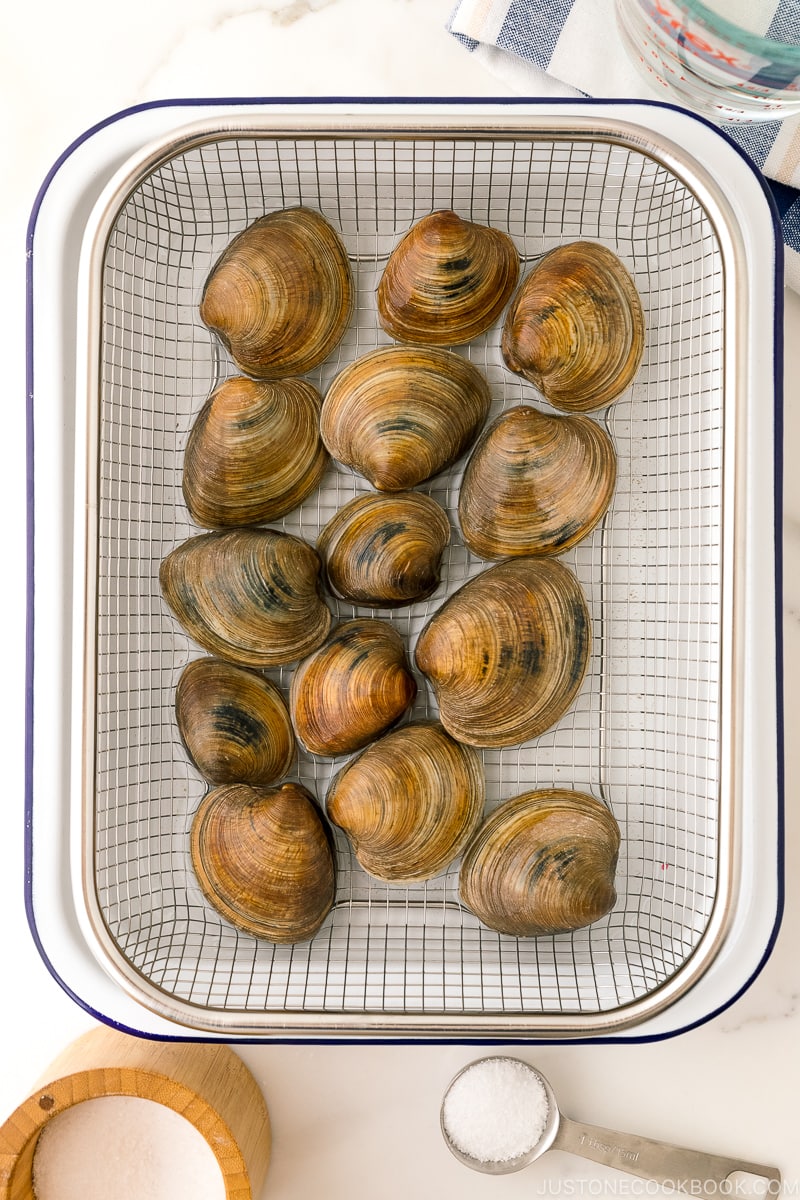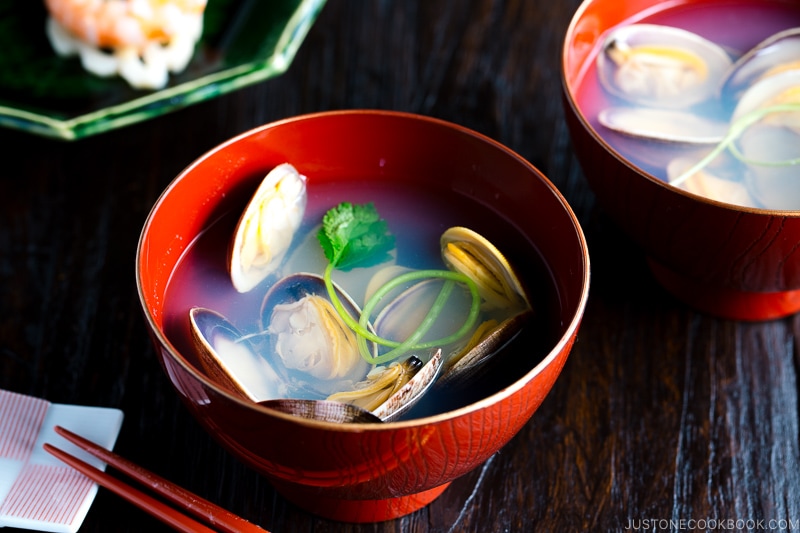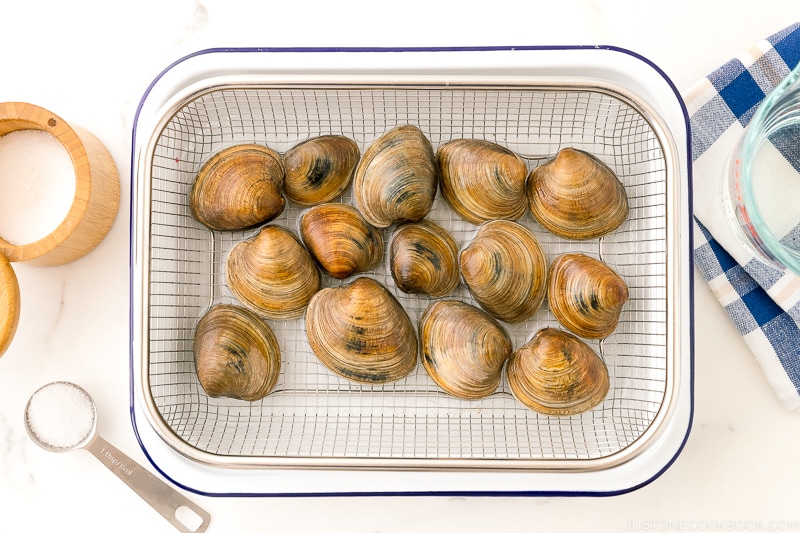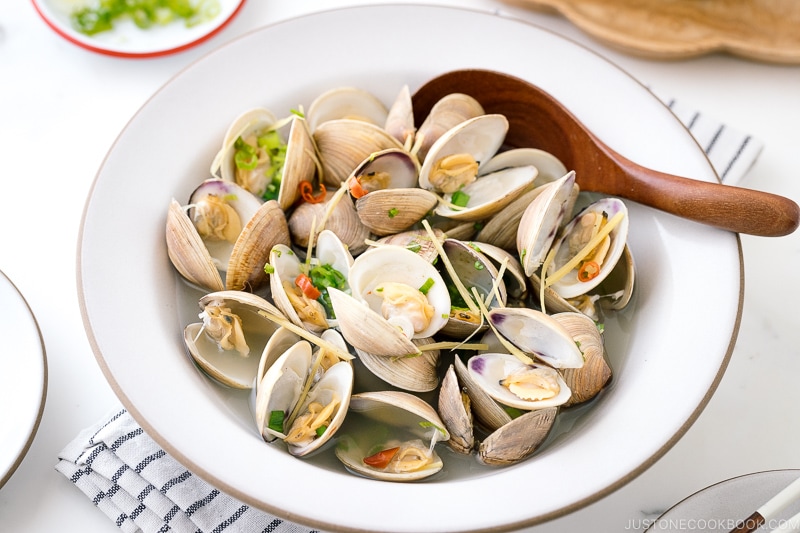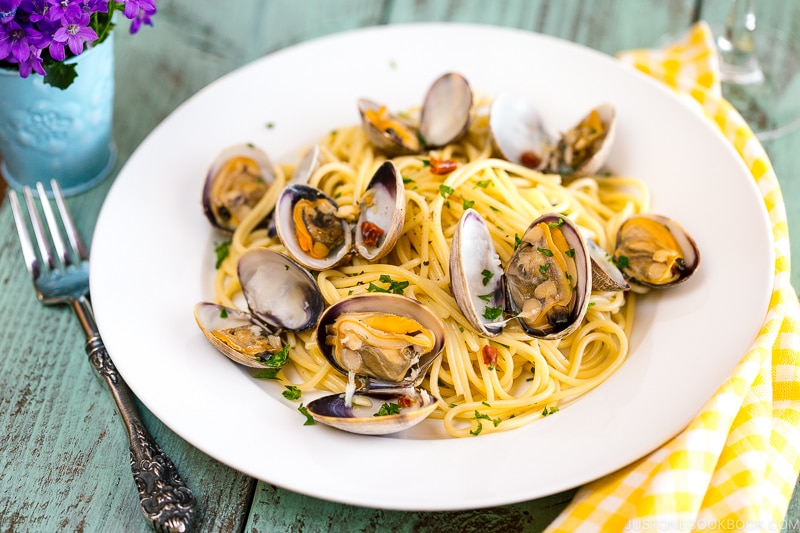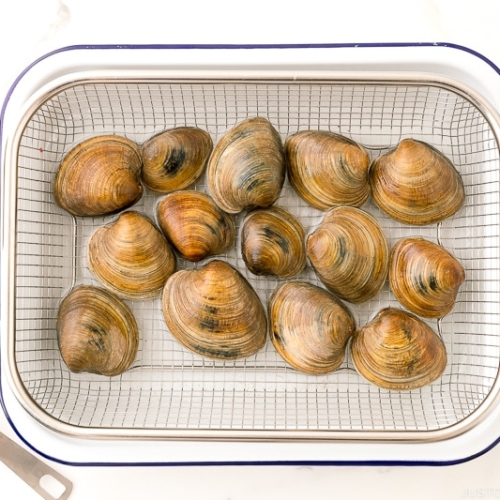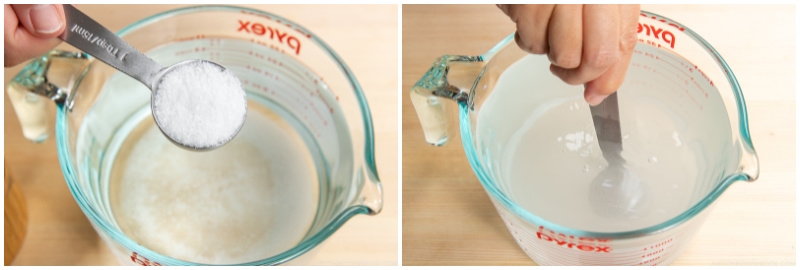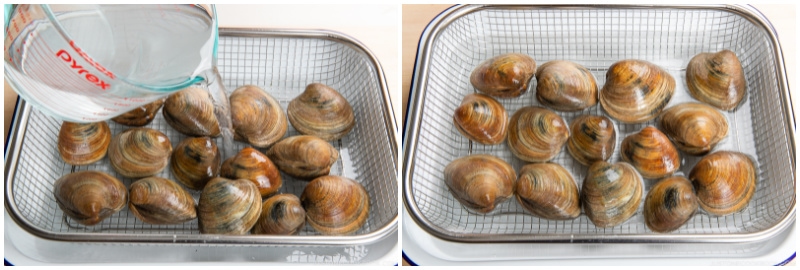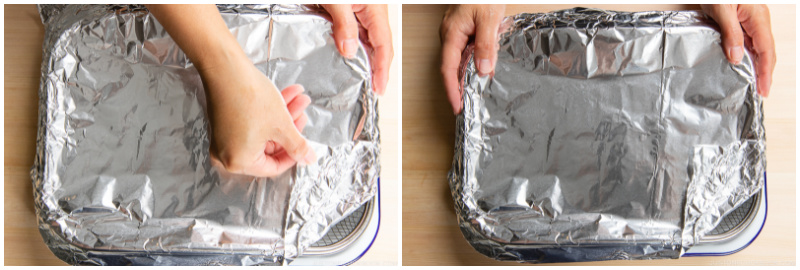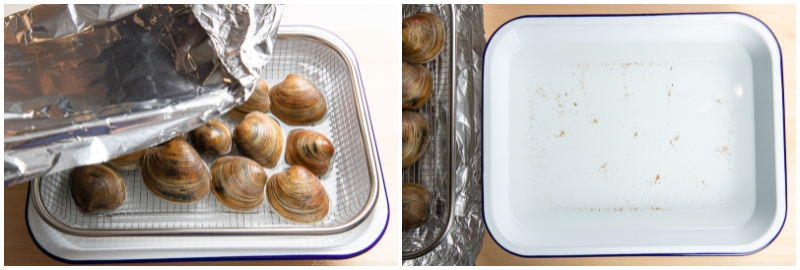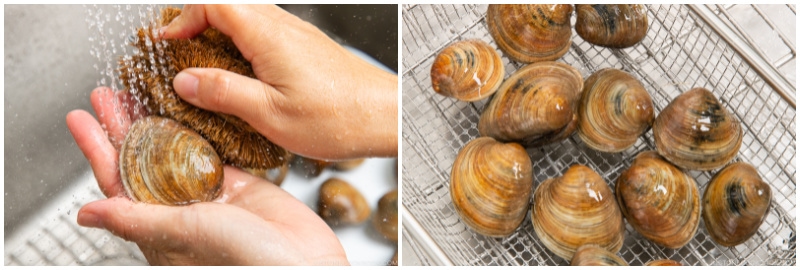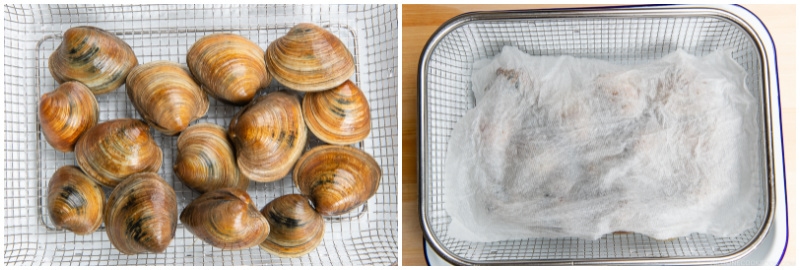Are you cooking clams for dinner? After returning from the grocery store, you must take care of the clams you bought. Learn how to purge the sand and grit from fresh clams with my step-by-step guide and video. This method is the best and easiest way to clean clams for a recipe!
Why We Need To Clean Clams
Live clams filter sand and saltwater out of their systems when they breathe. You definitely need to purge sand from clams that you caught at the beach. How about ones you get from the fresh seafood case in a mesh bag at the market? You may think the clams at the store are ready to cook, and some packages may say “cleaned.” However, the clam’s system hasn’t thoroughly purged its sand and grit yet. They also emit poop, dirt, and saltwater constantly while alive! So, I recommend cleaning store-bought clams when you get home. The worst experience is when you crunch into grit while dining on fresh clams. It’s happened to me with those “cleaned” clams. Don’t take a risk and ruin your meal; it’s well worth the extra time to clean the clams of their debris!
When To Clean Clams
The best time to clean clams is as soon as you come home from grocery shopping or clamming at the beach in coastal regions. Refrigeration slows down the clam’s system, and will take more time to purge. So the sooner, the better! This technique works for all types hard-shell clams and other bivalves. These include razor clams, cherrystones, and steamer clams.
Different Ways To Clean Clams
There are various ways to clean clams and each method will probably work fine. In the US, one popular way is to make the clams ingest cornmeal so they’ll purge the sand and grit out. In Japan, the most common method is by soaking in simple saltwater. It may seem a little intimidating at first, but it requires very little expertise. Fishermen and home cooks all use this method and it’s the only trick I use to clean clams, too. Here’s how to do it the Japanese way.
What You’ll Need
salt — A generous amount of salt is important to make your saltwater as close to seawater as possible. The salt concentration of seawater is about 3%. cold water flat tray (or large bowl) wire rack (or large sieve or strainer) aluminum foil firm brush
3 Easy Steps To Clean Clams
Here’s a quick summary; see below for detailed instructions and photos on how to do each step. To finish cleaning, the shells of clams need scrubbing with a brush under cold running water. Now they’re ready to use! After draining, put them in a bowl or tray and cover with a moist cloth or damp paper towel, refrigerate, and use within 2 days.
Clam Recipes To Try
There are plenty of great ways to cook fresh clams. They’re great shellfish to cook in Japanese seasonings as well as garlic and olive oil. Check out these recipes to enjoy restaurant-worthy clams at your own table!
Sake Steamed Clams Clam Pasta Japanese Clear Clam Soup Japanese Clam Miso Soup Grilled Little Neck Clams
Wish to learn more about Japanese cooking? Sign up for our free newsletter to receive cooking tips & recipe updates! And stay in touch with me on Facebook, Pinterest, YouTube, and Instagram. Editor’s Note: This post was originally published on March 01, 2011. New images have been added and the blog content has been updated.
